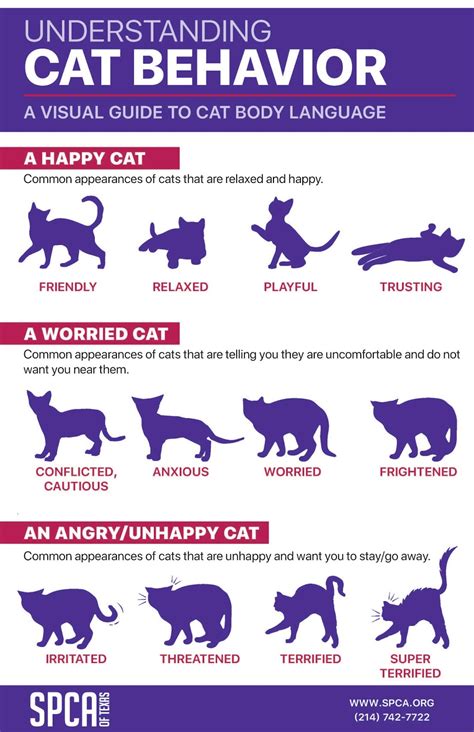Introduction
Cats, with their enigmatic and captivating nature, have long fascinated researchers and cat enthusiasts alike. Understanding their complex behaviors is crucial for enhancing their well-being and fostering harmonious relationships between humans and felines. In this comprehensive exploration, we delve into the latest research findings and advancements in cat behavioral studies, uncovering the intriguing insights that have emerged over the years.

The Importance of Cat Behavioral Research
Understanding Feline Health and Well-being: Behavioral issues can often indicate underlying physical or emotional health problems. Research helps identify these links, enabling early detection and appropriate interventions.
Enhancing Human-Feline Interactions: By comprehending cat behavior, we can better anticipate their needs and create environments that promote positive experiences and reduce stress.
Preventing Problem Behaviors: Understanding the triggers and motivations behind undesirable behaviors allows us to develop effective strategies for prevention and management.
Groundbreaking Studies in Cat Behavior
Vocalizations:
- Cats have a diverse range of vocalizations, each with specific meanings.
- Research has identified distinct “meow” patterns associated with different emotions and requests.
Body Language:
- Cats communicate extensively through body language.
- Studies have revealed the significance of tail position, ear movements, and posture in expressing emotions and intentions.
Environmental Enrichment:
- Providing cats with stimulating and enriching environments has been shown to enhance their physical and mental well-being.
- Research suggests that vertical space, hiding spots, and play opportunities are essential for feline contentment.
Social Behavior:
- While cats are often perceived as solitary animals, studies have demonstrated that they can form strong bonds with other cats and even humans.
- Research explores the factors that influence social interactions and attachment in cats.
** Cognitive Abilities:**
- Cats have remarkable cognitive abilities, including problem-solving, memory, and spatial reasoning.
- Studies have shown that cats can recognize their owners’ voices and learn complex tasks.
Innovative Technology in Cat Behavioral Research
Wearable Devices:
- Wearable devices, such as activity trackers and GPS collars, provide valuable insights into cat behavior patterns, such as sleep-wake cycles and exploration distances.
Motion Capture:
- Motion capture technology allows researchers to analyze feline movement in great detail, providing a deeper understanding of their behavior in different contexts.
Artificial Intelligence:
- Artificial intelligence (AI) algorithms are being developed to classify cat behaviors based on video recordings, offering new possibilities for automated behavioral monitoring.
Unlocking New Applications
Personalized Cat Care:
- Research findings enable the development of tailored cat care recommendations based on individual behavior patterns.
Feline Enrichment Gadgets:
- Innovative products and gadgets can be designed to enhance feline environmental enrichment and promote well-being.
Cat-Friendly Urban Planning:
- Understanding cat behavior can inform urban planning strategies to create more cat-friendly environments in cities and towns.
Strategies for Effective Cat Behavioral Research
Observational Studies:
- Observing cats in their natural environments allows researchers to gather accurate data on their behaviors without interference.
Experimental Studies:
- Controlled experiments can test specific hypotheses about cat behavior and identify cause-and-effect relationships.
Longitudinal Studies:
- Longitudinal studies track cat behavior over time, providing valuable insights into developmental changes and behavioral patterns.
Future Trends and Advancements
Interdisciplinary Collaboration:
- Collaborations between researchers in veterinary medicine, psychology, and computer science will lead to a more comprehensive understanding of cat behavior.
Genetic Influences:
- Studies exploring the genetic basis of cat behavior can identify potential genetic predispositions to certain behaviors.
Precision Cat Care:
- Precision cat care approaches aim to tailor interventions to individual cats based on their unique behavioral profiles.
Conclusion
In conclusion, cat behavioral research and studies hold immense promise for unlocking the secrets of our feline companions. Through ongoing advancements in research methods and the application of innovative technologies, we continue to gain deeper insights into their enigmatic behaviors. By utilizing this knowledge, we can create environments that promote their well-being, strengthen human-feline bonds, and improve the overall quality of life for both cats and humans alike. As we venture into the future of cat behavioral studies, let us embrace the exciting possibilities that lie ahead.





















